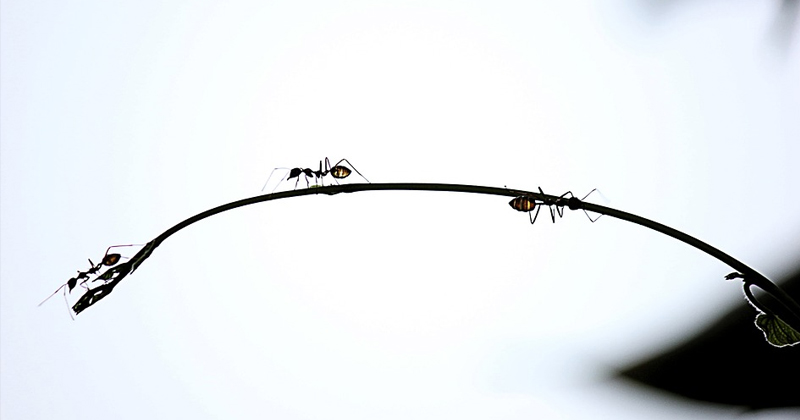Ants are everywhere. The hard-working animals even climb trees and high rise balconies in search of food. They reach heights that seem impossible for such small creatures. And sometimes, they fall from great heights But what happens if they crash? Do ants survive falls from a great height? If yes, How? Let’s find out.

Ants seem to be constantly active. The insects live together in highly complex social colonies. You can watch them in the forest, in the garden, and on the street. Sometimes the crawlers are also where we don’t want them. They are then swept down from balconies of high-rise buildings but can they survive if they fall three or more stories?
Yes, they survive. The main reason for damage-free falls from great heights is the low weight of the animals. There are around 13,000 different species worldwide, domestic specimens can be assumed to weigh around three milligrams. The rest is pure physics.
The science behind the ants’ survival is ‘the higher the mass of a body, the higher the energy with which it is attracted to the earth and the more violent an impact with the earth’. The larger the surface area of a body to its mass, the more the pressure is distributed on impact. Then there is the air resistance. The larger the surface area in the fall, the more the air resistance reduces the falling speed. Ants with their low weight and relatively large surface area, therefore, emerge relatively gently on the ground, even from great heights.
Suggested Read: Why Is Biodiversity Important?
Insects Fall Slowly – How do Ants Survive Falls From Great Heights?
If you take all the parameters together, the falling speed for an ant is about six kilometers per hour. That would be 1.66 meters per second. For comparison, a skydiver who jumps from an airplane at an altitude of 4000 meters and plunges face down towards the earth reaches the speed of about 200 kilometers per hour after six to seven seconds. If he hits the ground at this speed, the impact would be so devastating that the human body would simply burst into pieces.

On the other hand, the crawling animals, like almost all other insects, fall much more slowly. Also, they have no bones that could break. Their bodies are held together by a Chitin shell that can withstand falls from great heights. And even inside the animals, nothing usually breaks in the event of a fall. In contrast to humans, they do not have a closed blood circuit with veins and arteries, so the pressure that arises in the event of an impact cannot cause internal injuries.
After falling into the depth, the animals have a completely different problem. Insects usually orient themselves with the help of fragrances or the environment to find the way back to their burrow. After a fall, however, they are removed from these landmarks. The animals are confused or panicked because a single ant has no chance of survival.
Even if it is not eaten by larger animals, it would not be able to survive long without resting in the ant colony. Because there, ants not only recharge their strength but also consume enough liquid not to dry out. And at night, the ant would be without the warmth of the protective structure and it could die of cold weather. Fortunately, biologists have discovered that stray ants also find a new place in foreign colonies.
Suggested Read: Why do Mosquitoes Buzz? Why do they Make that Annoying Sound?
Tree ants that live in the tropical rainforest have acquired a special way of falling. When fleeing predators, the ants first jumps down from the tree. However, since they have little chance of survival on the ground, they bend their bodies into a ‘J’ shape during the fall. As a result, they slide back towards the trunk and in most cases reach it again. That’s how these ants survive falls from a great height.


